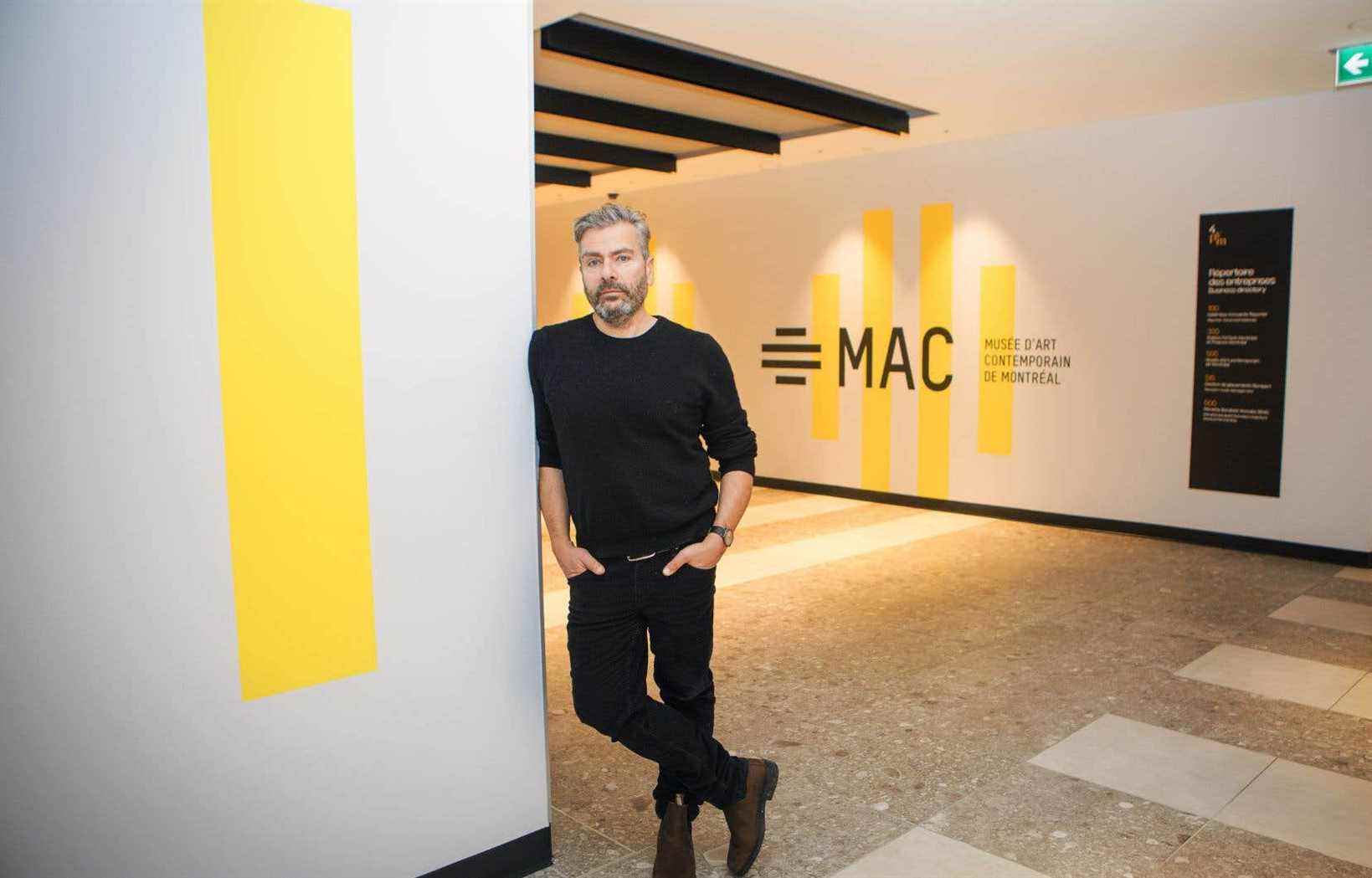Five days before the opening of Contagion by terror from the Forensic Architecture (FA) collective, the staff were busy in the three rooms of the Museum of Contemporary Art (MAC), which had just moved to the ground floor of Place Ville-Marie (PVM). The tasks to be done seemed to be plentiful, despite the tight deadline. “It’s always like this in editing,” reassures the director general and chief curator of the museum, John Zeppetelli.
Nevertheless, it is not a montage like the others. It is about the baptism of the temporary premises that the MAC will occupy the time of the vast site which must improve its building of the Place des Arts (PdA). The cultural mediation service, also repatriated here, will be located at the corner of Mansfield and Cathcart streets, while the 5e floor accommodates the offices in an open space, except that of the direction, also animated by a commotion during our passage.
“I’m a little nervous, but extremely proud to have managed to make an exhibition with FA, a London research group that I have admired for so long,” says the man who heads the MAC’s activities. The exhibition planned for years was to be held before the MAC’s move; it finally inaugurates the transitional spaces, a report which pleases the director, who sees it as an opportunity to “strike hard with an exhibition that [va] make talk ”for its topicality – the violence exerted by governments employing the Pegasus malware – despite being“ much smaller than before ”.
The pandemic has been added to other obstacles which in recent years have plunged the MAC into a waltz-hesitation, forcing it to delay the start of its work. ” We are super confident that the train is now gone from the station, ”enthuses Mr. Zeppetelli, who owes this progress to his partnership with Ivanhoé Cambridge, owner of PVM, the location of the relocation.
Challenges to overcome
To start the work, it was especially necessary to move the portion of the collection housed in the basement reserves, or 85% of its more than 8,000 works, to protect them from the work. This “monster” operation, the real cornerstone of the renovation project, has not yet been completed, admits the director. He still believes it is possible to open the enhanced MAC to the public in 2025, although the real estate overheating and its impacts on financing and the schedule raise other uncertainties.
“We absolutely want to get back to PdA as soon as possible. We are very aware of the interruption of the services that we should offer to the population and to the artistic ecosystem ”, summarizes John Zeppetelli.
Until then, the MAC intends to play its role to the best of its ability, a major challenge to be taken up, notes the director. “We will do as much as possible with our means,” says the one who anticipates the drop in revenue linked to ticketing due to reduced attendance. As the ceilings of the rooms are also lower and museum standards are lacking, certain content, such as paintings or more fragile works, cannot be presented here either.
What can we expect then? In the spring there will be an exhibition by New York-based Argentinian artist Mika Rottenberg, with video installations and the film Remote (2019), a Canadian premiere. John Zeppetelli hopes to use the hall designed for screenings continuously, perhaps with a more spontaneous offer. However, it is difficult to know more about the upcoming programming. “There, for the moment, we will wait a bit for us to settle in, but we are already cooking up projects in addition to the gallery”, says the director still dazed by the move, although impatient for better understand its new neighborhoods.
In addition
The MAC, he likes to recall, reconnects with PVM, an iconic site in downtown Montreal, where it held its first exhibition in 1965. The context bears traces of this era with sculptures by Armand Vaillancourt and Charles Daudelin which are part of the collection of the State Museum. The site’s strengths, according to Mr. Zeppetelli, who particularly underlines the presence on the esplanade of the work of Nicolas Baier, Self-portrait (2012). Property of Ivanhoé Cambridge, it is freshly restored.
Moreover, given the reduced exhibition spaces, the MAC “will put the accent elsewhere, including on cultural offers outside the walls”, such as shows that the Place des Arts could host, a natural ally, as was the case with the case in the past with the performances of the Icelandic Ragnar Kjartansson and the Japanese Ryoji Ikeda.
John Zeppetelli also gives an example of the innovative activities held during the past year, depending on the closures, by the cultural mediation team who visited educational institutions, then the online offer of the conference series ” Understanding contemporary art ”involving specialists in the field.
No question of suspending the development of the collection either. After a year focused on “100% local acquisitions”, as stated in the campaign in support of artists here weakened by the pandemic, it is the return of the usual ratios for purchases, and for future programming. “We are a Crown corporation dedicated to presenting works from Quebec, Canada and internationally, and almost in that order. There is always a Quebec presence within our walls and we will continue like that, ”assures the one who took office in 2013 with the mandate, among other things, to pilot the expansion of the museum.
While he sees himself at least “accompanying the institution until the delivery of the new building”, he says he is satisfied with the successes achieved so far, including the exhibitions of Rafael Lozano-Hemmer and Leonard Cohen, two MAC productions currently on tour in San Francisco.
